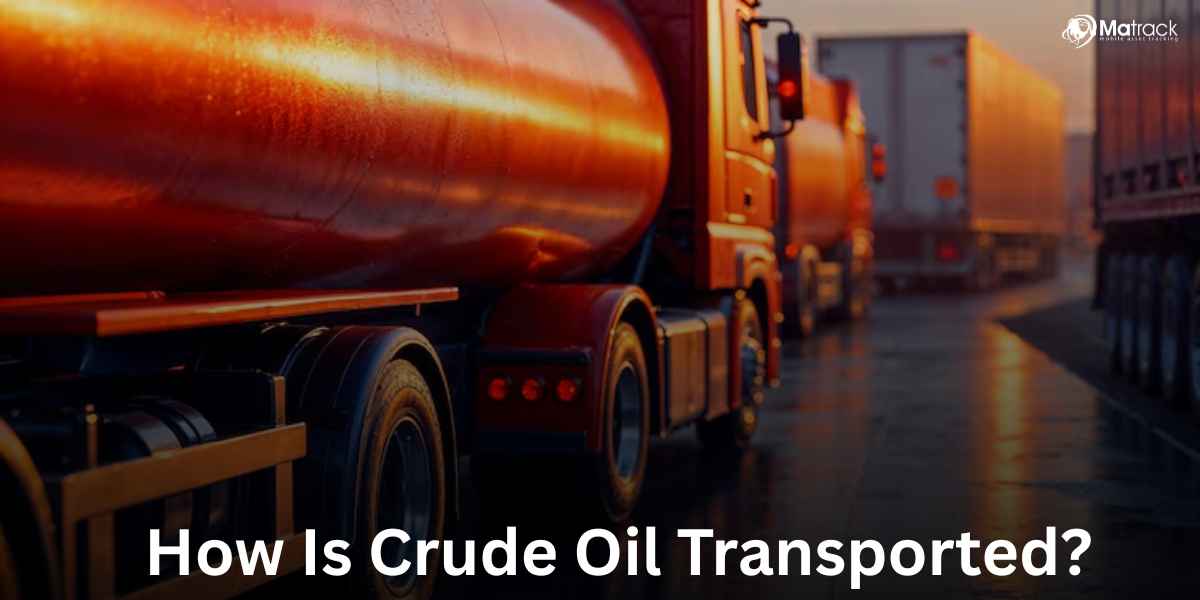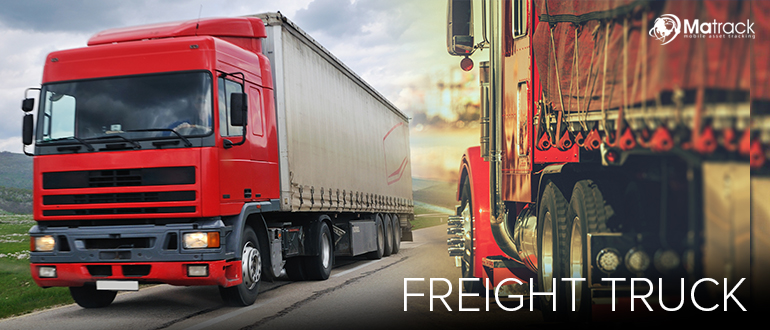Key Takeaways:
- Crude oil is a natural fossil fuel that requires refining and is transported using pipelines, ships, rail, and trucks based on route and volume.
- Crude oil is transported through pipelines for long distances, by ships across oceans, by rail where pipelines are absent, and by tanker trucks for short-haul and final-mile delivery.
- Tanker trucks are essential for flexible access, emergency response, and controlled short-range transport with safety features like GPS and spill protection.
- Matrack improves tanker truck operations through real-time tracking, smart routing, safety alerts, and simplified compliance management. .
What Is Crude Oil?
Crude oil is a naturally occurring fossil fuel extracted from underground reservoirs. It forms over millions of years from the remains of ancient marine organisms compressed under heat and pressure.
This unrefined liquid contains hydrocarbons, which serve as the base for fuels, plastics, and chemicals. Crude oil must undergo refining to separate and convert its components into usable products like gasoline, diesel, and jet fuel.
What Are The Crude Oil Transportation Methods?
Crude oil transportation methods include four primary options based on volume, distance, and infrastructure:
- Pipelines: Transport large volumes over long distances with low cost and high efficiency. Suitable for continuous flow from production fields to refineries.
- Marine Tankers: Carry crude oil across oceans or along coasts. Ideal for international and offshore transport where pipelines are not feasible.
- Railways: Use specialized tank cars to move oil in areas without pipeline infrastructure. Flexible and scalable for emerging production zones.
- Tanker Trucks: Deliver small volumes over short distances. Essential for remote site access and final-leg connections to terminals or refineries.
Comparative Analysis of Transport Methods
| Method | Volume | Cost Per Barrel | Accident Risk | Flexibility |
| Pipeline | Very High | Low ($5) | Low | Low |
| Ship/Barge | Extremely High | Moderate | Moderate | High |
| Rail | Medium | High ($10–15) | High | High |
| Truck | Low | Highest | High | Very High |
How Is Crude Oil Transported Through Tanker Trucks?
Crude oil is transported through tanker trucks using sealed cylindrical trailers designed for liquid cargo. Tanker trucks operate over short distances, usually between well sites, storage facilities, and refineries.
Loading and Sealing
Crude oil is first pumped into insulated tanker trucks using specialized hoses at well sites or terminals. Each truck is securely sealed after loading to prevent spillage, leaks, and vapor emissions during transport.
Short-Distance Hauling
Tanker trucks are used for short-range crude oil transport, usually within a radius of 100–200 miles. Each truck carries approximately 200–250 barrels per trip, making them ideal for connecting remote sites to main pipelines or storage terminals.
Emergency Use
During pipeline shutdowns or infrastructure failures, tanker trucks ensure continuous oil delivery. They serve as a mobile backup solution that keeps operations running during crises or maintenance periods.
Flexible Access
Tanker trucks provide critical access to oilfields in rugged terrains or isolated regions without rail or pipeline infrastructure. Their mobility allows transport across uneven roads and temporary routes where other methods are not viable.
Safety and Monitoring
Modern crude oil trucks are equipped with GPS systems, pressure release valves, and spill-containment features. These safety tools minimize environmental risks and ensure regulatory compliance during road transport.
How Matrack Improves Your Tanker Trucks Fleet Management?
Matrack fleet management solution helps you stay on top of your tanker truck operations with ease and precision. You get real-time tracking, smart route planning, and full visibility of every vehicle, so deliveries stay on schedule and fuel costs stay low.
It also brings peace of mind when it comes to safety and control. With features like geofencing, idle-time monitoring, and driver behavior alerts, you can cut down on risks and make sure your fleet is being used the right way.
Staying compliant becomes simpler too. Matrack keeps all your logs, maintenance updates, and inspection records in one place, so you’re always ready for audits without digging through paperwork.



